Today we temporarily moved from our usual rehearsal space to the JNT Company office space. A little disoriented, but ready to keep learning, we started our session by exploring our new space. How is the size and shape of the room different? How is the sound different? How does the concrete floor feel on bare feet? Is even the smell different? The participants were asked these questions as they changed the speed and level at which they moved, made shapes, and adjusted the tension. Also, they were instructed to change from walking at a speed of 10 to a speed of 1. With precision in mind, it looked like time was warping around them as the actors suddenly slowed. Without question, that is the kind of magic we are hoping to eventually share with an audience.
After we had learned more about the space and ourselves, Lauren led the actors in a game of throwing pebbles in a pond by using only their voices. Standing in a circle, the participants began tossing rocks. Some stones went in with a small splash while others were so big they left the entire surface of the pond rippling. Some rocks got skipped across the lake. A handful of pebbles scattered over the water and gently sank to the bottom. Then the actors were instructed that a storm was coming. Above the splashing sounds were now rolling thunder and whistling winds. It all felt rather ominous for a while before the storm and the pebble throwing eventually subsided.
Continuing with our exploration of the voice, Evan gave the actors a couple of lines to memorize from the Kennedy plays we were going to be reading later in the session: “There are worms in the attic beams” and “I killed the white dog.” Using only those lines, the participants were instructed to cut down a tree with an ax, then a chainsaw, and finally knock it over with the power of their voice. Additionally, they tried knocking over a chair, wrapping the words around a ball, and pulling the ball towards them (this one elicited raised eyebrows from Gwethalyn and me). The actors were also given qualities to say their lines with: sounding first like tiny bells, then giant church bells, and finally a whole bell chorus. And lastly, they were told to make their lines sound like honey, cotton candy (which resulted in my absolute favorite sounds), and rock candy. Hearing each actor’s interpretation of the instruction was fascinating, and having all of them together created a weird, wonderful, and sometimes nightmarish soundscape. I’ve included a few recordings of their voice work below:
Next, we played Machine: one participant made a repetitive sound and motion, and then the rest built in with their own sounds and motions to form the machine. The actors worked together as they were instructed to speed up until eventually, they broke down. They also tried being a happy machine that “shoots out rainbows and bubbles,” an angry machine, and a sick machine. Watching their sounds and movements change together to fit the instructions was riveting. They had to stay connected with each other through the whole exercise. Finally, we tried shaking it up even more as we had their machine produce honey, Jello, and saltwater taffy (so much of it that it got stuck in the gears and the machine fell apart). The directors and I were giggling because the actors solved each problem in totally unexpected ways. Laughing, Gwethalyn exclaimed, “I smiled so much my mouth is sore!”
When it came time to start our readings, we began with African-American playwright, Adrienne Kennedy. Heavily influenced by her upbringing in the Catholic church, Kennedy’s work often includes themes or motifs of religion and ceremonies. We experienced this when reading her play, A Rat’s Mass, which as the name suggests, features a church procession and service. Kennedy also wrote about her experiences of being black and her struggle with her racial identity and white idealism, which is a major theme of the play. Hearing it read aloud, several of the participants reported feeling uneasy and on edge. This is no shock, as Kennedy’s plays often feel like a surreal nightmare that purposefully makes the audience feel as uncomfortable as she felt. Additionally, we read another play by Kennedy, A Lesson in Dead Language, where she explores the feeling of punishment that comes with womanhood. After hearing the pieces, one of the participants pointed out that Kennedy’s writing deals with the “confusion of being a child” in which the children of her plays do not necessarily know what is happening, but know that it is important. This was an excellent observation as another one of Kennedy’s major themes is the tie of adolescence and sexuality. Overall, Kennedy’s characters often deal with a buried trauma through fragmentation of the event. If a group of actors wants to work under her influence, they will be sure to find a common trauma in the target story, as well as make use of Kennedy’s other techniques such as repetition of motifs or phrases, religious or ritualistic imagery, and fragmented dialogue.
The other techniques we studied were those of the Open Theater, a theater group in the 1960s based in New York City. They were founded on the idea that theater was to be a community and a collaborative exercise. In this way, their group was democratic, without hierarchy, and worked from a combination of input from the writers, actors, and directors. More specifically, we focused on Susan Yankowitz’s Open Theater play, Terminal, that is a collective investigation into mortality and a consideration of both personal and social responses to the fact of death. Each section of the play explores a different side of death: its impact, connotations, our relationship to it and our impression of it. One participant noted the plainness of the language, which is true as the Open Theater was highly presentational. However, the Open Theater also acknowledged the audience and their role in theater, which can be observed at the end of the play when the actors just breathe with the audience. Using the techniques of the Open Theater and Terminal, the actors would devise a performance based on an exploration of all sides of the target story and present those ideas in a montage of scenes. To finish our work with the Open Theater, Megan led us in a game of rhythm jam, this time including phrases from the text that we repeated and then played with as part of our soundscape. The result sounded like an eery chant for the summoning of the dead.
Continuing with our exploration of the authors’ techniques, we made rituals out of everyday activities. The first was asking for the time and receiving the answer, but as if it was to appease a vengeful and angry god. The second was reheating a meal in the microwave, but as a ritual to build community. The exercise showed how everyday tasks can be a sort of ritual themselves, as well as how we can manipulate actions to give them a new meaning for our audience.
Ending the session, we played a wonderful game of Pineapple Umbrella. The participants were told to make shapes based off of wacky phrases: potato landmine, zesty paper, angst wardrobe, and so on. As the actors explored shaping, they were also given the task of transitioning between shapes on a count. Again, they worked on their sustain and precision. As with the other exercises today, their solutions to the problems we gave them were wonderfully unpredictable and made for quite a landscape. As the session came to a close, the group ended by coming together to form a giant pineapple umbrella shape.
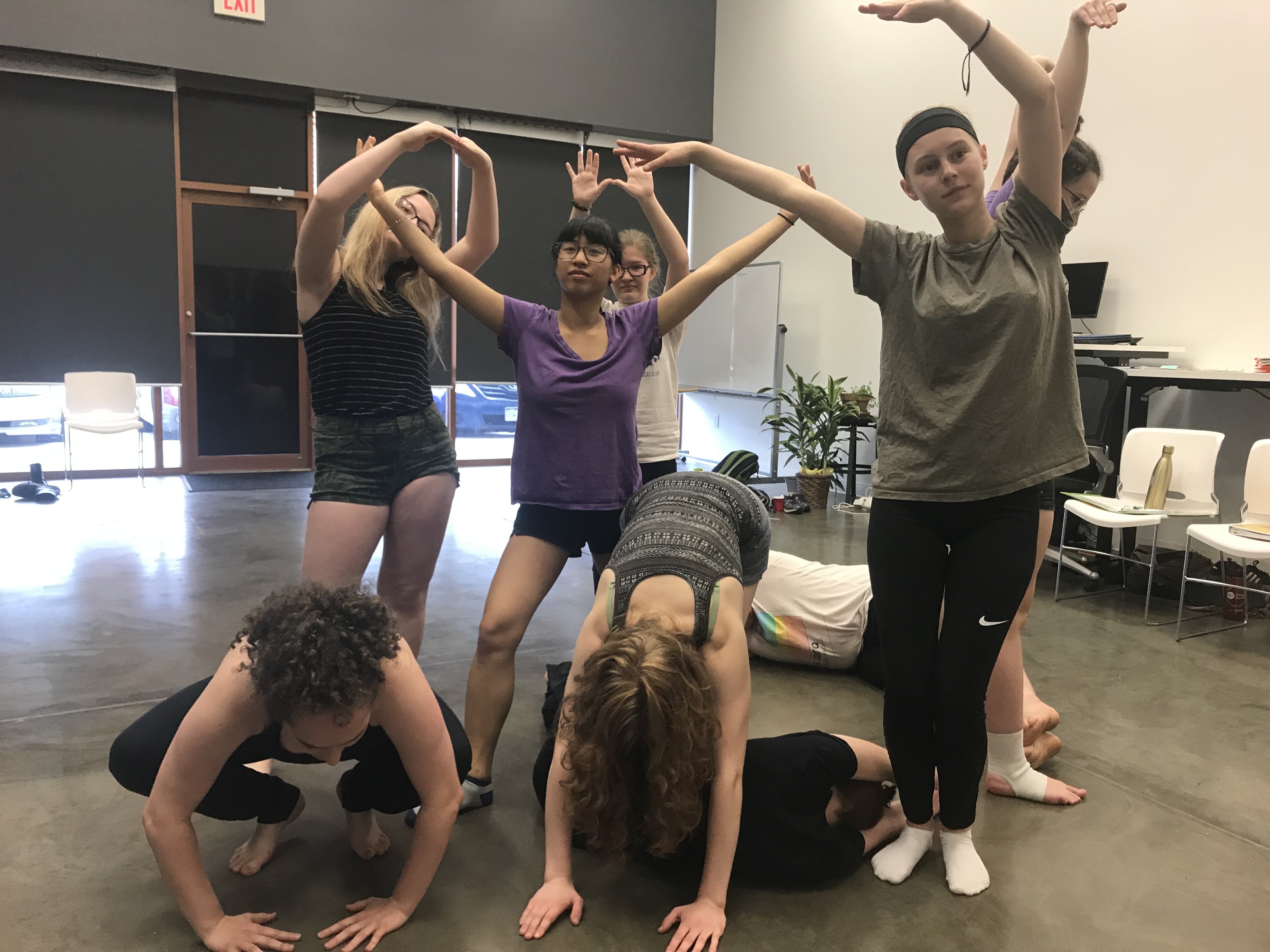

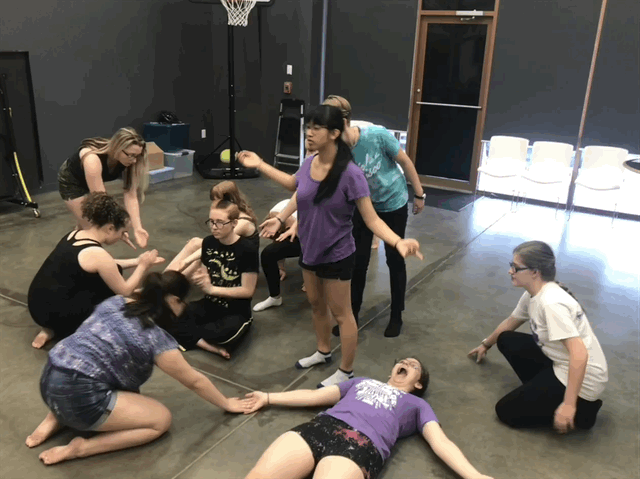

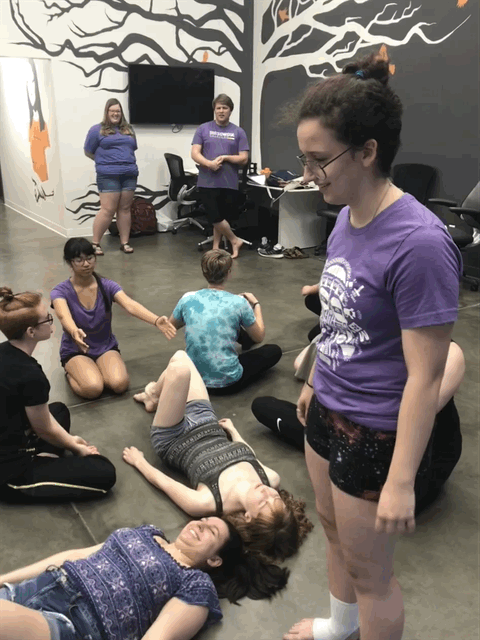
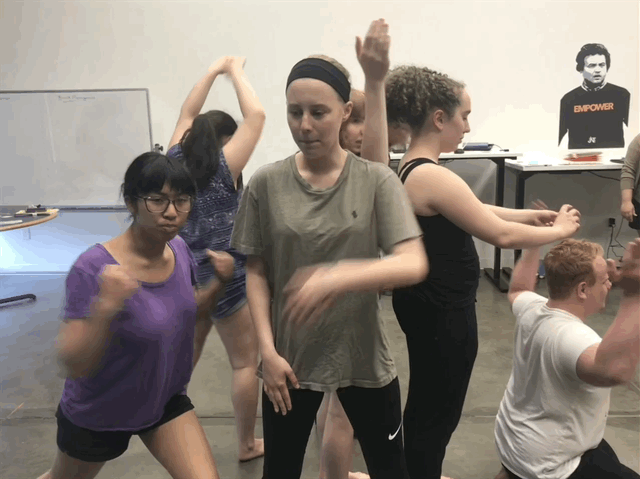
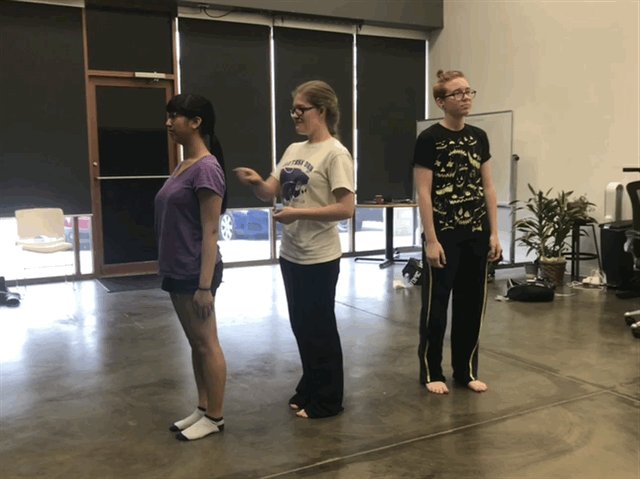

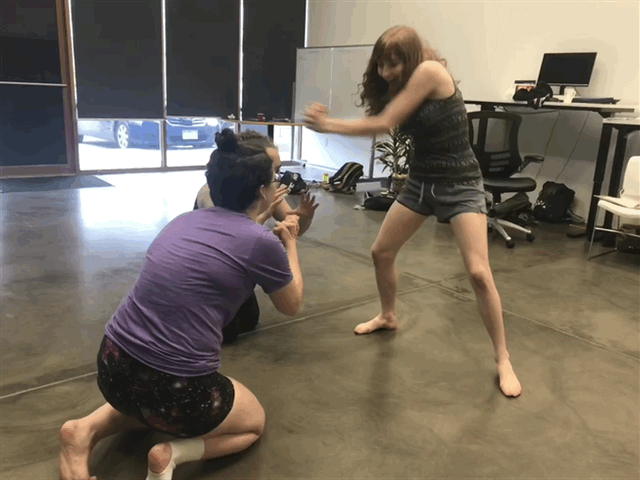




Leave a Reply
You must be logged in to post a comment.